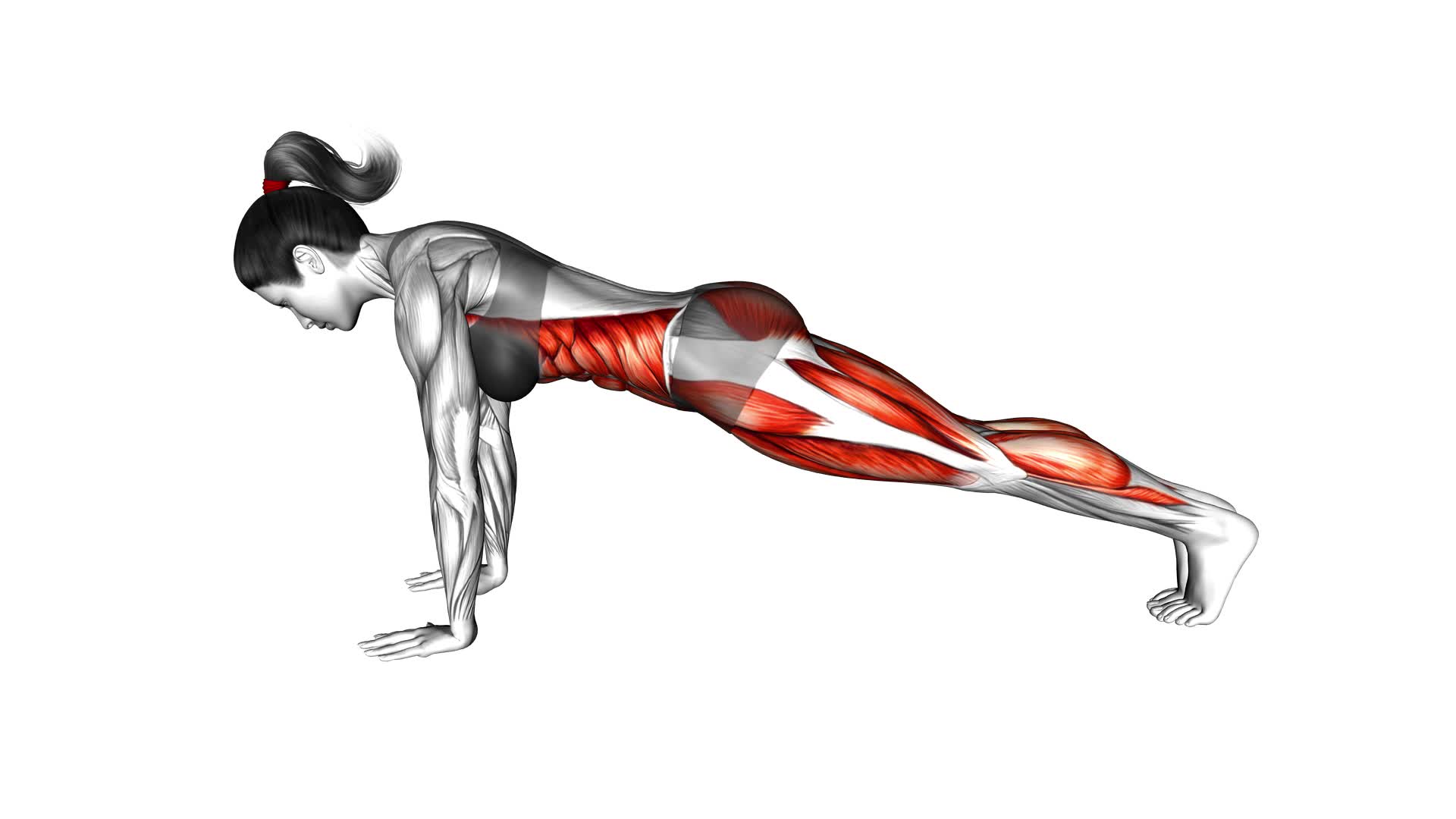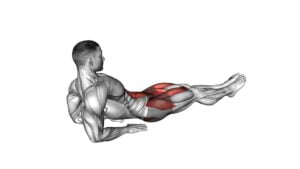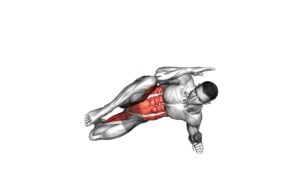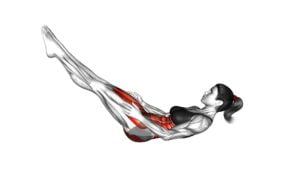Plank Alternate Knee Tuck (female) – Video Exercise Guide & Tips

Get ready to strengthen your core and tone those abs with the Plank Alternate Knee Tuck. This challenging exercise targets your entire abdominal area, helping you achieve a stronger and more defined midsection.
Watch This Exercise Video
In this video exercise guide, we'll walk you through the proper form and technique to ensure maximum effectiveness. Whether you're a beginner or an experienced fitness enthusiast, we've got modifications and advanced variations to suit your level.
Get ready to feel the burn and take your core workouts to the next level!
Key Takeaways
- The Plank Alternate Knee Tuck targets the entire abdominal area and strengthens the core.
- It improves stability, posture, and reduces the risk of back pain.
- There are modifications and variations available for different fitness levels.
- Proper form and technique, as well as core engagement and breathing techniques, are important for performing the exercise effectively.
Benefits of the Plank Alternate Knee Tuck
Get ready to discover the amazing benefits of incorporating the Plank Alternate Knee Tuck into your workout routine. This exercise isn't only effective in strengthening your core muscles, but it also offers various modifications and variations to suit your fitness level and goals.
One of the key benefits of the Plank Alternate Knee Tuck is its ability to target your abdominal muscles. As you perform the exercise, you engage your rectus abdominis, obliques, and transverse abdominis, resulting in a stronger and more defined core. This can improve your stability and posture, making everyday activities easier and reducing the risk of back pain.
Additionally, the Plank Alternate Knee Tuck can be modified to suit your needs. If you're a beginner, you can start with a modified plank position by resting on your knees instead of your toes. As you progress, you can increase the difficulty by extending your legs fully, challenging your core and overall body strength.
Furthermore, there are various variations of the Plank Alternate Knee Tuck that you can incorporate into your routine. For instance, you can add a knee drive at the top of the movement, bringing your knee towards your elbow to further engage your obliques. You can also try incorporating a stability ball or sliders to increase the challenge and work your core from different angles.
Incorporating the Plank Alternate Knee Tuck into your workout routine can have numerous benefits for your core strength and overall fitness. By exploring different modifications and variations, you can continuously challenge yourself and achieve optimal results.
Proper Form and Technique
To perform the Plank Alternate Knee Tuck with proper form and technique, there are a few key points to keep in mind.
- First, focus on engaging your core muscles throughout the exercise to maximize its effectiveness.
- Additionally, pay attention to your breathing, inhaling deeply as you bring your knee towards your chest and exhaling as you extend it back.
- Lastly, be mindful of common form mistakes such as sagging hips or rounding your back, and strive to maintain a strong and stable plank position throughout the movement.
Core Engagement Tips
Engage your core by focusing on contracting and tightening your abdominal muscles during the Plank Alternate Knee Tuck exercise. Maintaining core stability is crucial for performing this exercise effectively and preventing injury. By engaging your core, you create a solid foundation and support for your body as you lift and lower your knees. This not only helps to strengthen your abdominal muscles but also improves your overall balance and stability.
To engage your core properly, imagine pulling your belly button towards your spine while keeping your back straight and your hips in line with your shoulders. Avoid arching or rounding your back, as this can put unnecessary strain on your spine. Remember to breathe deeply and evenly throughout the exercise to enhance your core engagement and maintain focus.
Now, let's move on to the next section and explore some breathing techniques that can further enhance the effectiveness of the Plank Alternate Knee Tuck exercise.
Breathing Techniques
Breathe deeply and consistently throughout the Plank Alternate Knee Tuck exercise to optimize your core engagement and maximize the effectiveness of the movement. Proper breathing techniques play a crucial role in enhancing your workout experience. Here are some tips to help you master your breathing during this exercise:
- Take slow, deep breaths in through your nose and exhale through your mouth.
- Focus on expanding your diaphragm as you inhale, allowing your abdominal muscles to relax.
- Coordinate your breath with the movement: exhale as you draw your knee in towards your chest, and inhale as you extend your leg back.
- Use breathing exercises and relaxation techniques to calm your mind and enhance your overall workout performance.
By incorporating these breathing techniques, you won't only strengthen your core but also achieve a sense of mental and physical balance.
Now, let's move on to common form mistakes to avoid during the Plank Alternate Knee Tuck exercise.
Common Form Mistakes
Avoiding these common form mistakes will help you maintain proper form and technique during the Plank Alternate Knee Tuck exercise.
By being aware of these mistakes and correcting them, you can maximize your results and prevent potential injuries. One common mistake is allowing your hips to sag or lift too high during the exercise. To maintain proper form, focus on keeping your body in a straight line from head to toe.
Another mistake is rushing through the exercise and sacrificing form for speed. Take your time and focus on performing each movement with control and precision.
Finally, avoid placing too much weight on your shoulders or wrists, as this can lead to discomfort or injury. By paying attention to these common mistakes, you can ensure that you're getting the most out of your Plank Alternate Knee Tuck exercise.
Now, let's discuss modifications for beginners.
Modifications for Beginners
If you're just starting out with the Plank Alternate Knee Tuck, there are some modifications you can make to make it more accessible.
One option is to simplify the knee tuck by only bringing one knee in at a time instead of alternating.
Another modification is to perform the exercise on your knees instead of your toes, which can help reduce the intensity.
Simplified Knee Tuck
To simplify the knee tuck exercise for beginners, start by using a subordinating conjunction such as 'while' or 'before'. This modification will help you ease into the movement and build strength gradually.
Here are some additional modifications you can incorporate to make the simplified knee tuck exercise more accessible:
- Start with a shorter plank position to reduce the distance between your hands and feet.
- Place your hands on an elevated surface, like a bench or step, to decrease the intensity of the exercise.
- Instead of lifting both knees towards your chest, focus on lifting one knee at a time.
- If you find it challenging to maintain stability, try performing the knee tuck exercise on your forearms instead of your hands.
By incorporating these modifications, you can tailor the knee tuck exercise to your current fitness level and gradually progress towards the full movement. Remember to listen to your body and make adjustments as needed to prevent any discomfort or strain.
Keep practicing and you'll soon be able to perform the full knee tuck with ease.
Gentle Modifications for Beginners
For beginners, start by incorporating gentle modifications into your plank alternate knee tuck routine to gradually build strength and improve stability. These gentle progressions won't only help you avoid injuries but also ensure a smooth transition into more advanced exercises.
One modification you can try is to perform the knee tuck with your knees on the ground instead of in the plank position. This reduces the amount of body weight you have to support, making it easier to maintain proper form and stability.
Another modification is to perform the knee tuck at a slower pace, focusing on controlled movements and engaging your core muscles.
Adaptations for Novice Participants
As a novice participant, you can continue to build strength and improve stability by incorporating adaptations into your plank alternate knee tuck routine. Here are some modifications for novices to help you progress at your own pace:
- Start with a modified plank on your knees instead of a full plank on your toes.
- Instead of alternating knee tucks, begin by lifting one knee at a time while maintaining a stable plank position.
- If you find it challenging to hold the plank, try reducing the duration to shorter intervals and gradually increase the time as you build strength.
- Use a stability ball or a bench to support your upper body while performing the knee tucks if the floor is too challenging.
Advanced Variations for Experienced Individuals
Challenge yourself with advanced variations of the Plank Alternate Knee Tuck exercise to further enhance your strength and stability. As an experienced individual, you have mastered the basic form of the exercise and are ready to take it to the next level. These advanced modifications will provide you with challenging progressions that will test your limits and push you towards your fitness goals.
One advanced variation is the Plank Alternate Knee Tuck with a Bosu Ball. By placing your hands on the Bosu Ball instead of the floor, you introduce an element of instability, forcing your core muscles to work even harder to maintain balance. This variation not only targets your abs but also engages your shoulders, chest, and glutes.
Another challenging progression is the Plank Alternate Knee Tuck with a Stability Ball. This variation requires you to place your feet on the ball instead of the floor, adding an extra level of difficulty. Your core muscles will have to work overtime to stabilize your body as you perform the knee tuck movement.
Remember to maintain proper form and engage your core throughout these advanced variations. Start with a few repetitions and gradually increase the difficulty as you become more comfortable. Push yourself, but listen to your body and know your limits. With dedication and consistency, you'll see improvements in your strength, stability, and overall fitness level.
Keep pushing forward and never stop challenging yourself.
Common Mistakes to Avoid
To avoid common mistakes while performing the Plank Alternate Knee Tuck exercise, be mindful of your form and focus on engaging your core throughout the movement. This will help you get the most out of the exercise and prevent any potential injuries.
Here are some common form mistakes to avoid and modifications for beginners:
- Dropping your hips: Keep your hips in line with your shoulders and heels. Avoid letting your hips sag or lift too high, as this can put unnecessary strain on your lower back.
- Holding your breath: Remember to breathe throughout the exercise. Inhale as you prepare to tuck your knee in and exhale as you extend your leg back out.
- Rounding your back: Maintain a neutral spine position throughout the movement. Avoid rounding or arching your back, as this can lead to discomfort and decreased effectiveness of the exercise.
- Using momentum: Focus on controlled movements rather than relying on momentum to perform the exercise. This will engage your core muscles more effectively and help you develop better stability and strength.
For beginners, you can modify the exercise by starting with your knees on the ground instead of being in a full plank position. This will reduce the intensity and allow you to focus on proper form and core engagement. As you become more comfortable and stronger, you can gradually progress to the full Plank Alternate Knee Tuck. Remember, it's important to listen to your body and work at your own pace.
Tips for Maximizing Results
To maximize your results, focus on maintaining proper form and engaging your core throughout the Plank Alternate Knee Tuck exercise. By doing so, you won't only increase the effectiveness of the workout but also prevent injuries.
One of the most effective strategies for maximizing progress in the Plank Alternate Knee Tuck is to ensure that your body is in a straight line from your head to your heels. Avoid arching your back or sagging your hips, as this can put unnecessary strain on your lower back. Engaging your core muscles will help you maintain stability and proper alignment.
Another tip for maximizing results is to keep your movements controlled and deliberate. Avoid rushing through the exercise or using momentum to lift your knees. Instead, focus on using your abdominal muscles to bring your knees towards your chest. This will increase the intensity of the exercise and target your core muscles more effectively.
Additionally, it's important to breathe properly during the exercise. Take deep breaths in through your nose and exhale slowly through your mouth. This will help you maintain focus, reduce tension, and provide your muscles with the oxygen they need to perform at their best.
Frequently Asked Questions
How Many Calories Can I Expect to Burn by Doing the Plank Alternate Knee Tuck?
You can expect to burn calories and potentially aid in weight loss by performing the plank alternate knee tuck exercise.
This exercise engages multiple muscle groups, including the core, arms, and legs, which can increase your heart rate and calorie burn.
Remember, the number of calories burned will vary based on factors such as your weight, intensity, and duration of the exercise.
Incorporating this exercise into your routine can contribute to your overall fitness goals.
Stay motivated and keep pushing yourself!
Will Doing the Plank Alternate Knee Tuck Help Me Lose Belly Fat?
Doing the plank alternate knee tuck can definitely help you lose belly fat. This plank variation targets your core muscles and engages your abdominal muscles, leading to increased calorie burn and fat loss in that area.
By consistently incorporating this exercise into your fitness routine, along with a balanced diet, you can work towards achieving a toned and lean midsection.
Stay committed and you'll see results in no time!
Can the Plank Alternate Knee Tuck Help Improve My Posture?
To improve your posture, try incorporating the plank alternate knee tuck into your workout routine.
This exercise not only strengthens your core but also helps improve flexibility in your hips and lower back.
By engaging your abdominal muscles and stabilizing your spine, you'll be able to maintain a more upright and aligned posture throughout the day.
How Often Should I Incorporate the Plank Alternate Knee Tuck Into My Workout Routine?
To improve your workout frequency and get the most out of your routine, it's important to incorporate the plank alternate knee tuck. This exercise targets multiple muscle groups, helping to strengthen your core and improve overall stability.
Beginners can modify this move by starting with a modified plank position or using a stability ball. Aim to include the plank alternate knee tuck in your routine at least 2-3 times per week for optimal results.
Keep pushing yourself and watch your progress soar!
Is It Safe to Do the Plank Alternate Knee Tuck if I Have a History of Lower Back Pain?
If you have a history of lower back pain, it's important to approach exercises like the plank alternate knee tuck with caution. Pay attention to your body's signals and stop if you feel any discomfort or pain in your lower back.
Consider consulting with a healthcare professional or a certified trainer who can provide guidance on modifying the exercise to make it safer for you. Remember, your health and well-being should always come first.
Conclusion
Incorporating the plank alternate knee tuck into your workout routine can offer a range of benefits, including improved core strength and stability.
By maintaining proper form and technique, you can maximize the effectiveness of this exercise.
Beginners can modify the movement to suit their fitness level, while experienced individuals can challenge themselves with advanced variations.
Remember to avoid common mistakes and follow these tips to achieve optimal results.
Stay committed and motivated on your fitness journey!

Author
Years ago, the spark of my life’s passion ignited in my mind the moment I stepped into the local gym for the first time. The inaugural bead of perspiration, the initial endeavor, the very first surge of endorphins, and a sense of pride that washed over me post-workout marked the beginning of my deep-seated interest in strength sports, fitness, and sports nutrition. This very curiosity blossomed rapidly into a profound fascination, propelling me to earn a Master’s degree in Physical Education from the Academy of Physical Education in Krakow, followed by a Sports Manager diploma from the Jagiellonian University. My journey of growth led me to gain more specialized qualifications, such as being a certified personal trainer with a focus on sports dietetics, a lifeguard, and an instructor for wellness and corrective gymnastics. Theoretical knowledge paired seamlessly with practical experience, reinforcing my belief that the transformation of individuals under my guidance was also a reflection of my personal growth. This belief holds true even today. Each day, I strive to push the boundaries and explore new realms. These realms gently elevate me to greater heights. The unique combination of passion for my field and the continuous quest for growth fuels my drive to break new ground.







